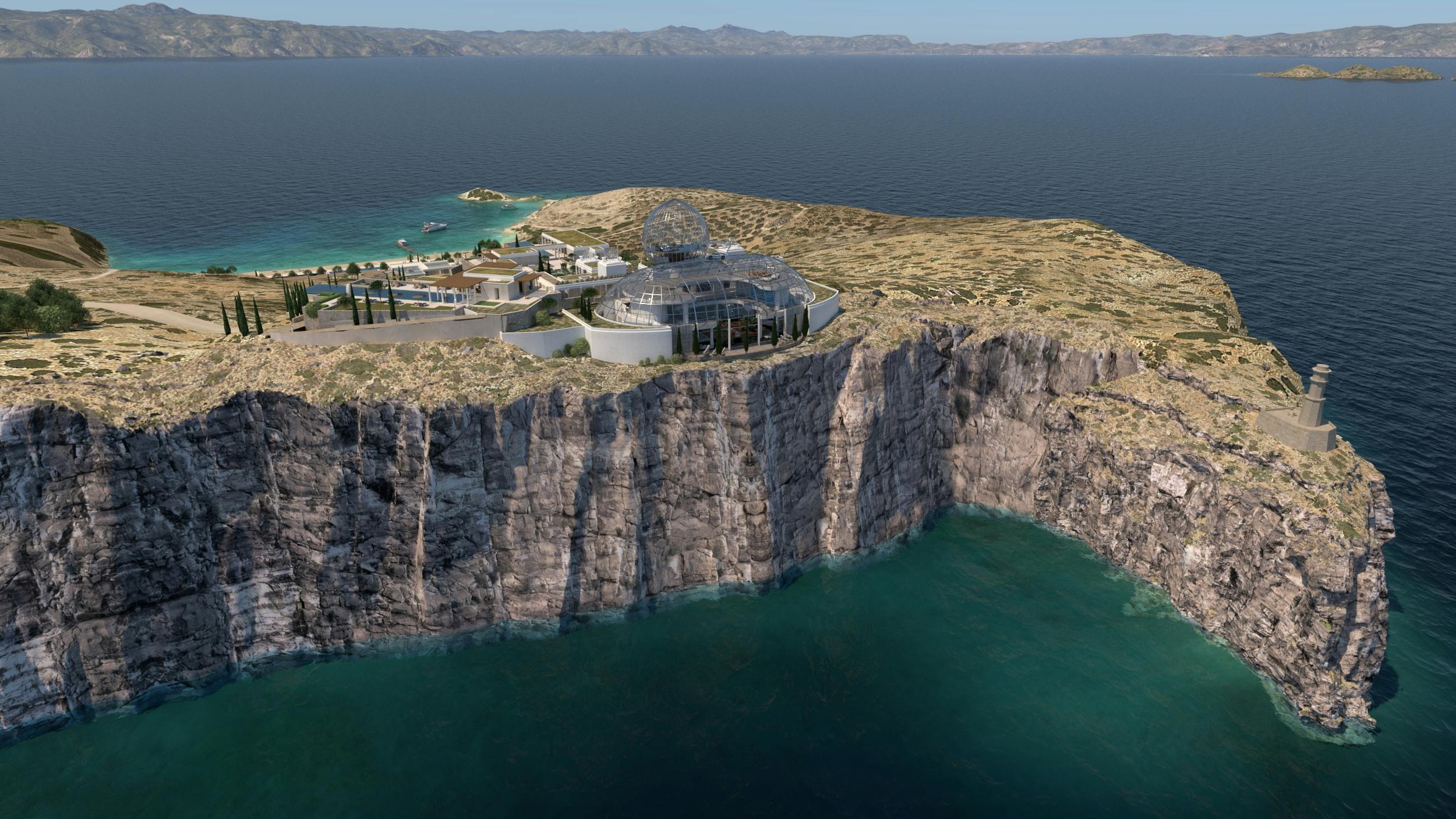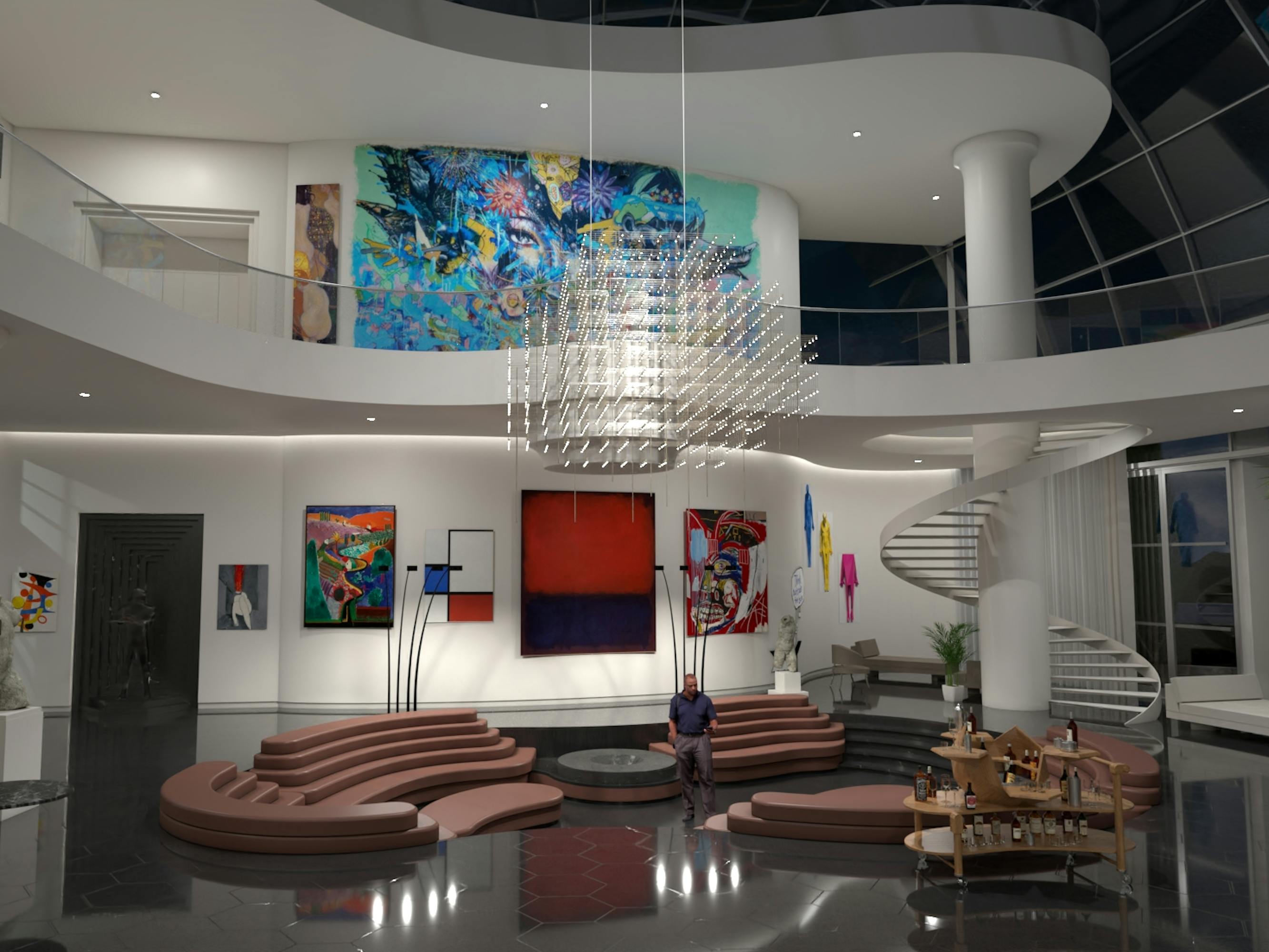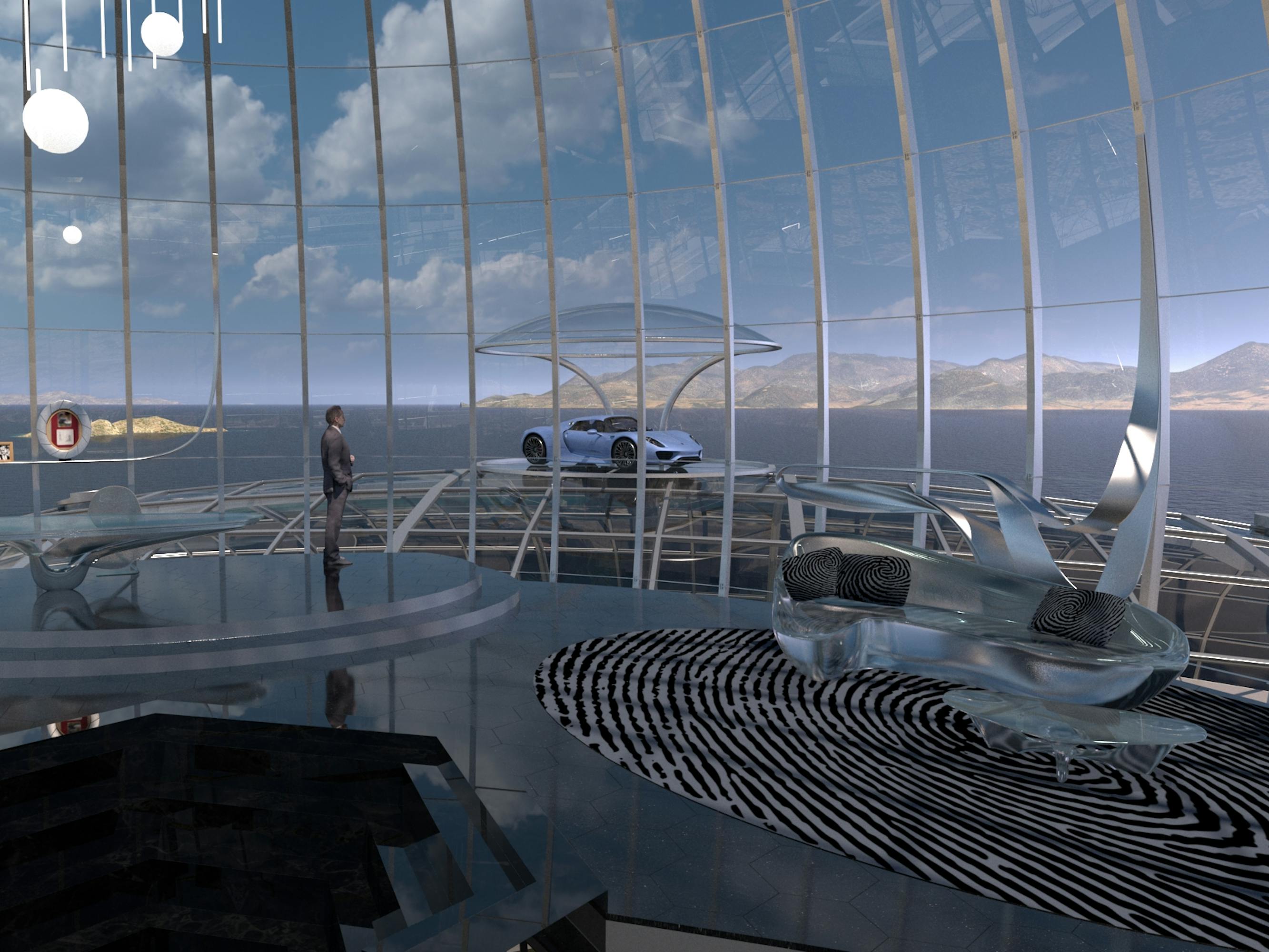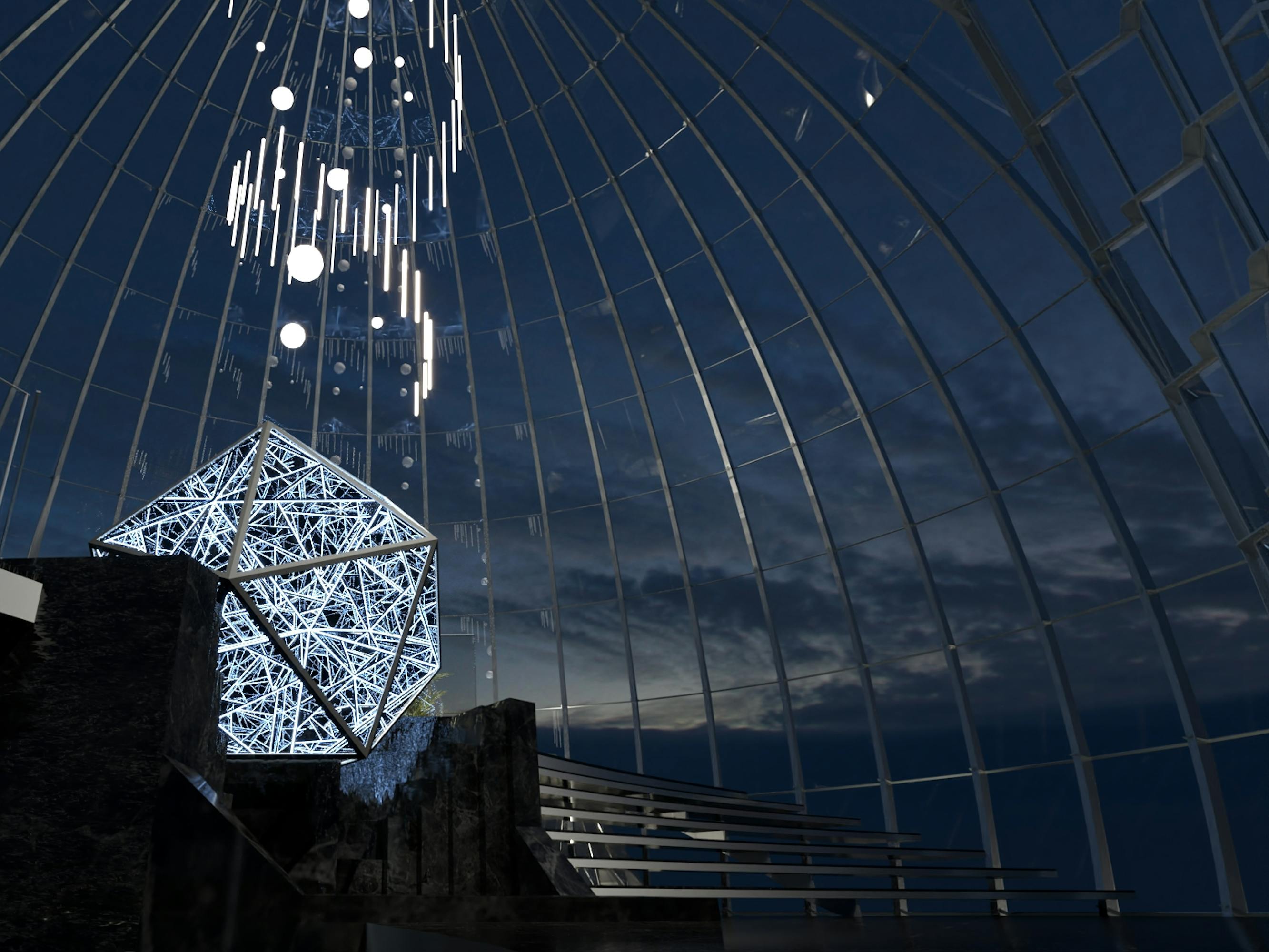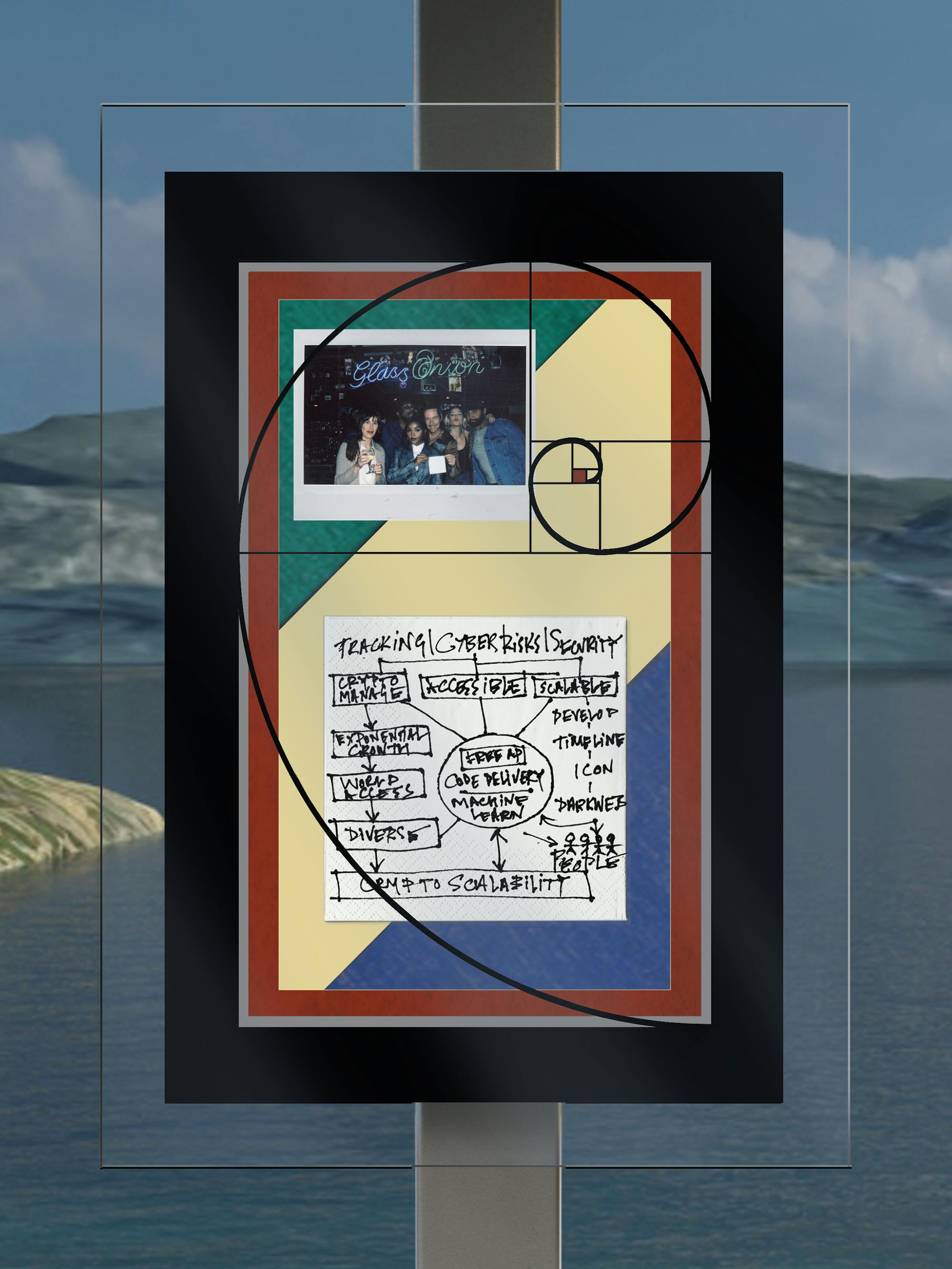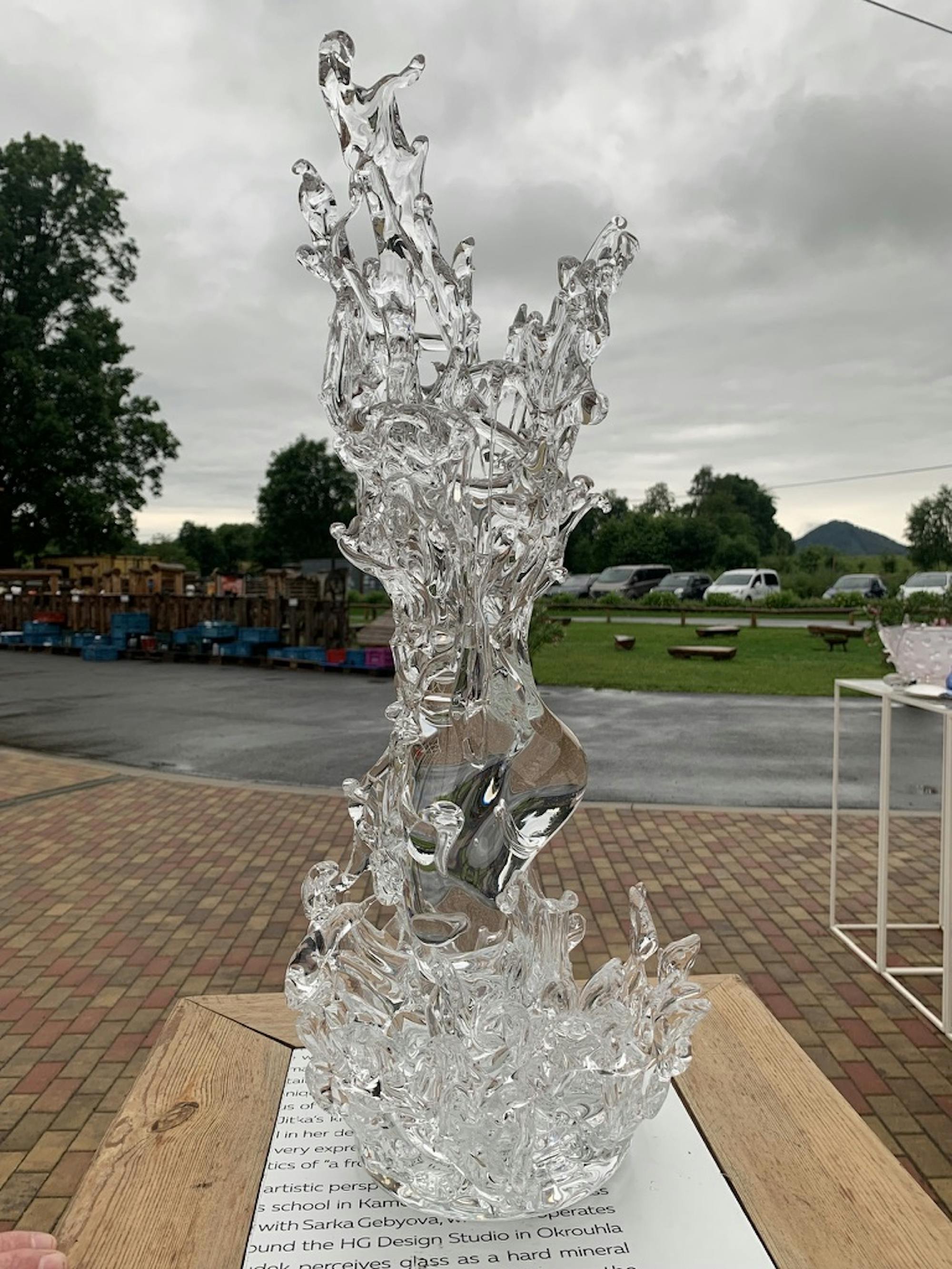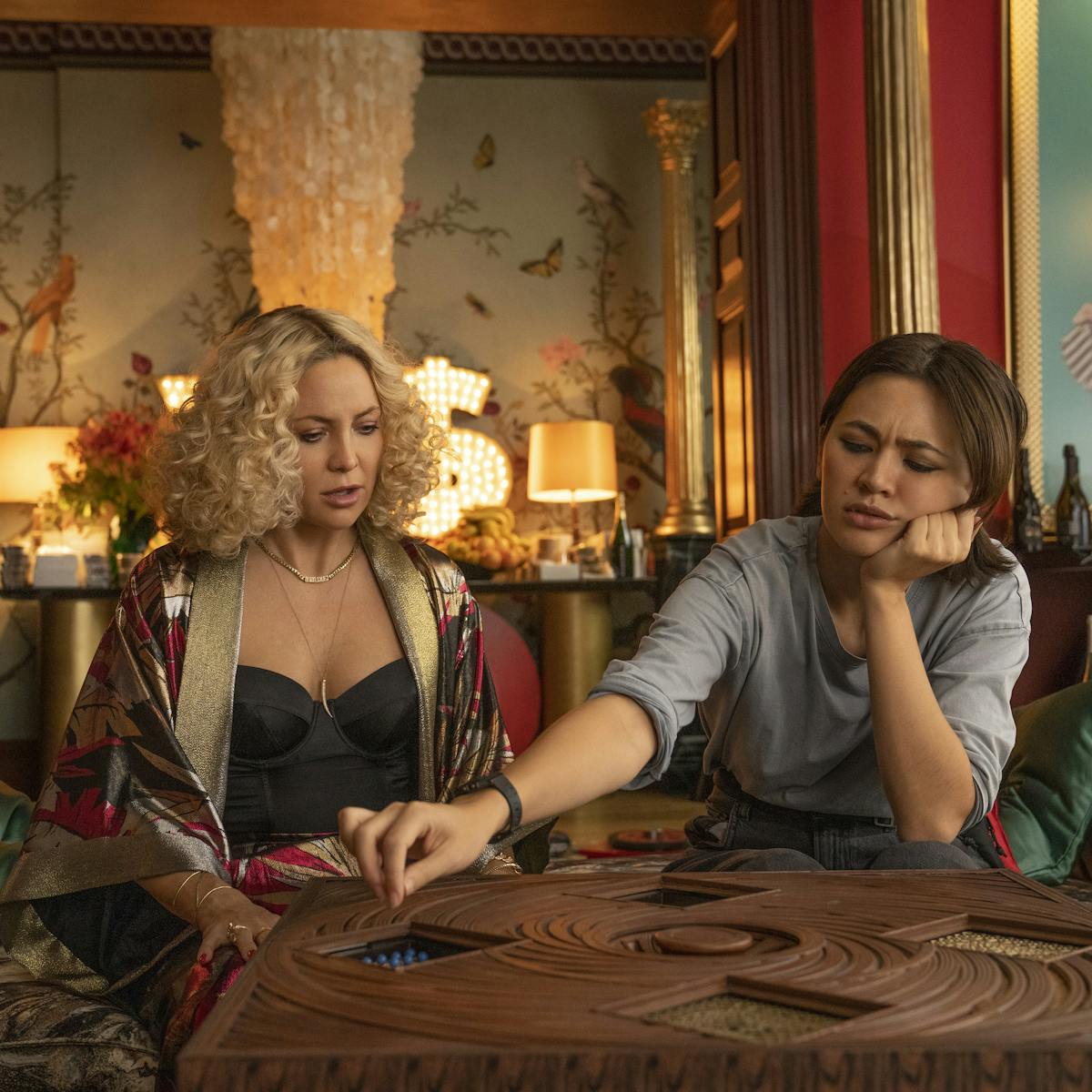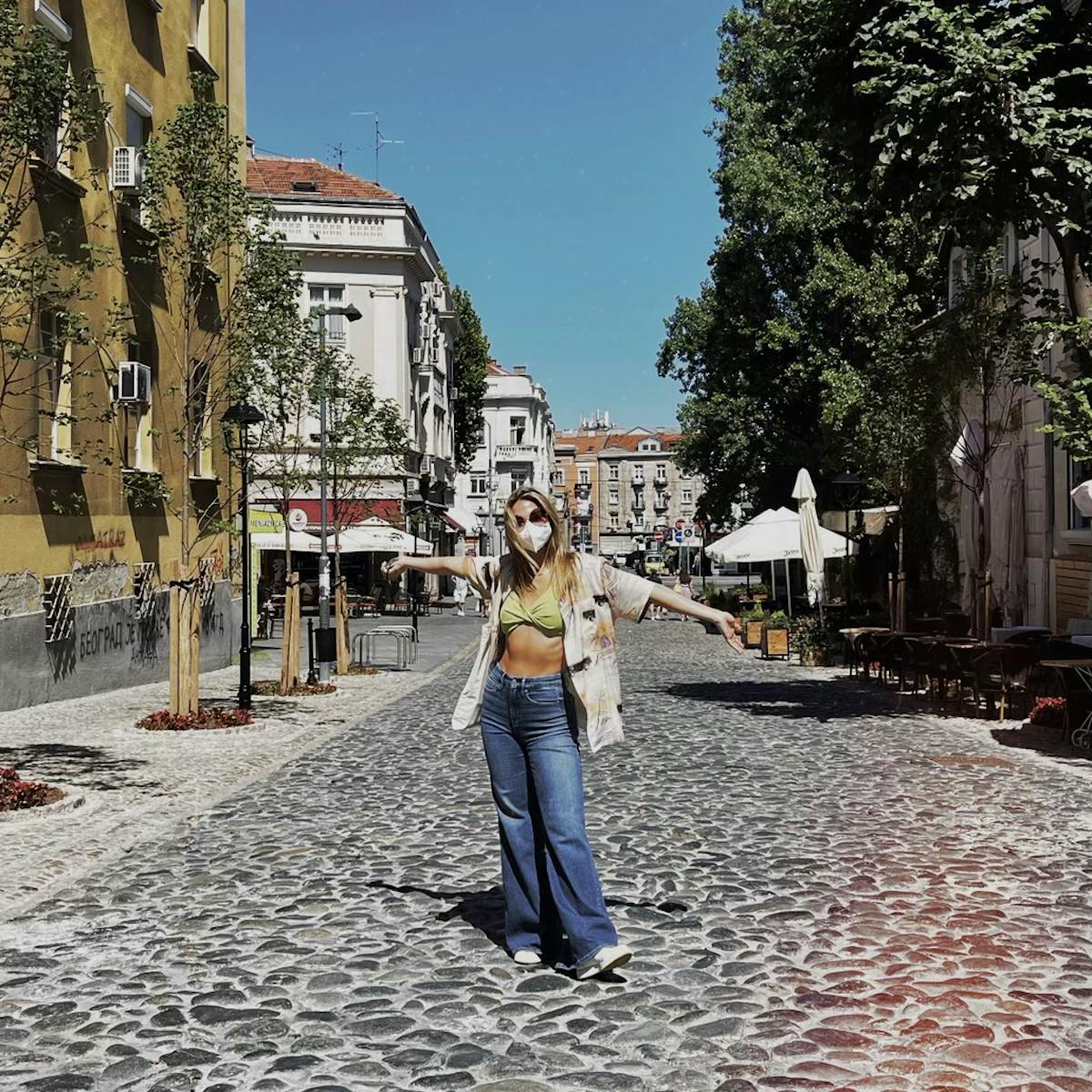Rich Heinrichs crafts a world of opulence and intrigue for Rian Johnson’s latest whodunnit.
Trading in the leafy estate of Rian Johnson’s Oscar-nominated Knives Out for billionaire Miles Bron’s (Edward Norton) lavish, Greek island compound, Glass Onion: A Knives Out Mystery sees the return of Southern sleuth Benoit Blanc (Daniel Craig), as he takes on another unruly group of suspects (played by Janelle Monáe, Kathryn Hahn, Leslie Odom Jr., Jessica Henwick, Madelyn Cline, Kate Hudson, and Dave Bautista) in an opulent setting. “It did end up being quite fun,” Johnson says of the new film’s location, which was designed by Oscar-winning Rick Heinrichs, “because it was a little bigger and a little broader.”
From shrieking foot chases through serpentine hallways to sneaky poolside eavesdropping made possible by strategic landscaping, the expansive property supplies the perfect setting for the dramatic unraveling that takes place in the second whodunit. The murder-mystery’s raison d’être is host Bron — founder of a corporation called Alpha — whose personality is reflected in his architectural choices, including the title production piece, the glass onion. The large glass dome sits atop a sprawling mansion and is an ode to the bar where Bron and his friends gathered, and where (Bron claims) he came up with the idea for the über-successful Alpha. “To me,” Heinrichs describes, “[the glass onion] was like Miles’s big head and this inflated sense of himself.” Adds Monáe, who plays Alpha co-founder Cassandra Brand: “It was amazing how they were able to make Miles’s house match exactly who he is.”
In addition to poking ironic fun at the gathering’s eccentric leader, the transparent orb became to Glass Onion what the knife-adorned chair meant to the first Benoit Blanc mystery: “I’m always fishing for something fun that Blanc can grab onto as an overwrought metaphor that he can beat to death,” says Johnson. “This is not an intricate, hidden thing. This is all in plain sight from the very start.”
While the orb looms as a heavy-handed symbol over Bron’s estate, it is in the building’s atrium where we get to know the cast of characters best, and where the majority of the madness deliciously unfolds. The space is decorated with a jaw-dropping display of expensive and singular objects which paint a pointed picture of the tech mogul to whom they belong. “[Miles’s atrium] needed to house an art collection which was going to show that Miles is projecting himself as someone wealthy enough to have all this famous art by famous artists,” Heinrichs, who used to work as a sculptor, says of the collection, which includes reproductions of work by the likes of Francis Bacon and a temporary mounting of Mona Lisa. “His wealth, his projection of being a bad-boy disruptor, his inflated ego, and his desire to impress people were all part of [the atrium’s design],” he adds. Bautista, who plays a muscular, speedo-wearing influencer named Duke, praises Heinrichs’s work, “It was like, Oh my god, of course [Miles] would pick these specific paintings to have in his house. They killed it.”
Heinrichs describes how each piece was used to convey a specific message: The atrium houses a glass sculpture collection, composed of original works and a portrait of Bron inspired by Lucian Freud — “We came up with this idea of Miles having hired him because he has a recognizable style, a famous artist to paint him.” The prized ensemble’s acquisitions and backstories reveal the perplexing group’s history, and offer clues, strategies, and threats once the game is afoot. “I was so distracted at one point I put my arm in one of the glass sculptures and it got stuck,” recalls Cline, who plays Whiskey, Duke’s gorgeous and ambitious girlfriend. “I just wanted to walk around and touch everything. I felt like I was a kid in a museum, just fascinated by the level of detail in all the pieces.”
The engaging props and set take on a life of their own in part because of how dynamically Glass Onion’s narrative and design are woven together. “I honor the fact that the director is not just helping us push the sets and the camera around, but also is the one coming up with the idea in the first place,” says Heinrichs, who worked with Johnson on The Last Jedi. “He’s the one who knows what it’s all about, who I actually can go to and bounce ideas off his own, much more innate sense of what’s right and what isn’t right.”
The immersive set design makes Glass Onion exquisitely fun to witness and dissect, but it also works with the rest of the film to comment on contemporary social dynamics. “There’s the fun and the exuberance and the wish fulfillment of the location but underneath is a really interesting story about power dynamics between people and how we all vie for that sense of control and power,” says Hudson, who plays the flamboyant model-turned-athleisure entrepreneur Birdie Jay. Heinrichs and Johnson managed to craft a physical space that communicated modern satire hand-in-hand with silliness and intrigue. “So much of what we do as a production design team and a department is to try to tell part of the story visually,” summarizes Heinrichs. “We’re able to give that a basis in reality and a specific feel, and even tell part of the satirical elements of the story and deepen the audience’s understanding of who these characters are and why they are the way they are.”
